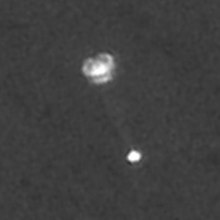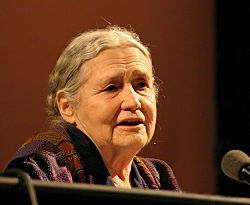 mydyingbride.org
mydyingbride.orgMy Dying Bride is a British death/doom metal band formed in 1990. My Dying Bride was formed in June 1990 after lead guitarist Andrew Craighan left his former band Abiosis to join Aaron Stainthorpe (vocals), Calvin Robertshaw (guitar) and Rick Miah (drums). Adrian Jackson would join later on bass. After six months of rehearsing, the band recorded and released their demo, Towards the Sinister. Its title was taken from a line in the song "Symphonaire Infernus Et Spera Empyrium".
In the early 1990s My Dying Bride were part of what was known as the Peaceville Three with Paradise Lost and Anathema - all three bands hailing from the north of England. They also toured in 1995 with Iron Maiden as part of their European tour.
Their music is characterised by romantic, sensual lyrics and an obsessive attention to atmospheric detail. Early demos were death metal in a traditional sense, though much slower than most. However, their debut album As the Flower Withers saw the addition of violins and keyboards. Turn Loose the Swans built on that foundation, utilising clean as well as death grunts and, unusually, lead violin on several tracks. Trinity is a compilation of the three early EPs and a 7". The Angel and the Dark River saw the abandonment of death grunts altogether, this added a more traditional Doom feel to the songs. Like Gods of the Sun continued in that direction.
The somewhat experimental 34.788%...Complete was next, which along with the following The Light at the End of the World polarized fans over the band's new direction. My Dying Bride entered something of a hiatus after this, releasing two retrospective albums Meisterwerk 1 and Meisterwerk 2. These albums lay halfway between best of albums and rarity compilations.
It was not until 2001's The Dreadful Hours that My Dying Bride managed to win round the bulk of their former fans. More innovative than The Light at the End of the World, yet retaining all the key elements of the My Dying Bride sound, The Dreadful Hours was a slightly darker release. 2004's follow-up Songs of Darkness, Words of Light showed a band continuing to expand and refine their sound and purpose. A substantial increase in live performances - once an unheard-of rarity - has led to much greater recognition by a new generation of fans.
Between 2003 and 2004, the band's label, Peaceville, re-released their entire back-catalogue in digipak format, with rare bonus tracks (demos, remixes, live performances etc.) added to each release. The band's next release came in May 2005, when they released the fancifully-titled Anti-Diluvian Chronicles, a fully-fledged best of box set featuring three discs and thirty tracks.
My Dying Bride toured the UK in November 2005, playing shows at London Astoria and Bradford Rio. The band spent the winter of 2005/2006 writing material for new studio album A Line of Deathless Kings. The album was released on October 9, 2006. It was preceded by the EP Deeper Down on September 18. Shortly before the release of A Line of Deathless Kings, Shaun Taylor-Steels announced his permanent departure from the band due to persistent problems with his ankle.
In early 2007, Jackson announced his departure and session-drummer John Bennett could no longer stay, citing a lack of time due to work commitments. Replacements were found in Lena Abé on bass and Dan Mullins on drums.
Pre-production has begun for My Dying Bride's next album. The band has entered the Futureworks studio in Manchester. Andrew Craighan stated that there are no song or album titles yet, but the feel of the album is, in his words, 'heading for empty and bleak with flashes of rage.'
Due to Sarah's pregnancy she has been replaced on keyboards by Katie Stone, announced on June 28th as an official member of the band. Katie is also a trained violinist and will play the parts Martin Powell used to play in live performances. It has been confirmed that she will perform violin on the upcoming album as well.
Current members * Aaron Stainthorpe - Vocals (1990-)
* Hamish Glencross - Guitar (1999-)
* Andrew Craighan - Guitar (1990-)
* Sarah Stanton - Keyboards (2002-)
* Lena Abé - Bass (2007-)
* Dan Mullins - Drums (2007-)
* Katie Stone - Violin, Keyboards (live) (2008-)









